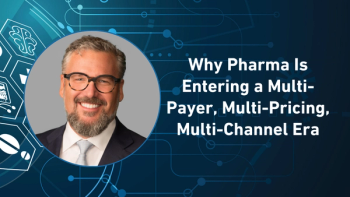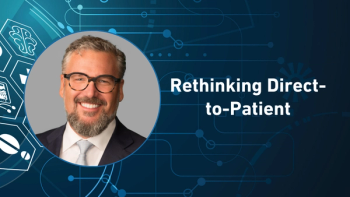Key Takeaways
- Pharma brands should evaluate AI in patient services by asking outcome-focused questions—how it improves patient care and brand performance—not just how it reduces costs.
- Effective AI solutions should preserve human touchpoints, have clear escalation paths when automation fails, and maintain strict data governance to protect patient information.
- Access leaders must ensure AI is used strategically to solve specific brand challenges, rather than adopting it simply because it’s trending.
Almost every patient services request for proposal (RFP) from pharma now includes artificial intelligence (AI) questions. But my round-up of market access experts reveals that most ask the wrong ones. With brand budgets shrinking, it’s natural to focus inquiry on where AI can bring cost savings. But the companies seeking real ROI should ask fundamentally different questions about implementation, outcomes, and risk. Seasoned technology leaders suggest the difference in approach lies not in what AI can do, but in knowing when it should—and shouldn’t—be used.
I sat down with Steve Randall, ConnectiveRx’s chief technology architect, to discuss the evolving role of AI in patient support services. We talked about the many closed-door conversations happening during vendor evaluations, RFP processes, or internal strategy meetings and identified some core questions access experts should be asking teams—internal or external.
Brand executives often get dazzled by automation promises and cost projections. What questions should they ask to cut through the pitch and focus on what really matters?
There are two easy lenses for that. There’s no question AI can be extremely helpful in leveraging data to improve back-office functions, document management, OCR (optimal character recognition), sentiment analysis, data anomaly detection, and a better understanding of the impact of cost-sharing programs and patient benefits. Using AI this way leads to better program quality and faster output.
But, when evaluating patient-facing applications, first ask, “Will this AI help us achieve better patient outcomes, or just the same outcomes more cheaply?”
If you design your support programs around efficiency metrics only—automating every touchpoint, minimizing human involvement—you risk turning a deeply personal experience into a transactional one. The key is distinguishing between cost-focused automation and outcome-focused enhancement.
Second, ask, “How do we ensure AI efficiencies translate into superior brand performance rather than just cost reduction?”
The brand’s goal should be “enculturated AI”—technology that enhances rather than disrupts patient care relationships. Success metrics should include adherence rates, successful prior authorizations (PAs), and reduced pharmacy abandonment—not just operational savings.
Let’s talk about patient experience. How should access leaders probe whether AI strengthens or weakens those critical patient relationships?
You can get to the core of what a partner is willing to think through for your brand in two ways. Start with this question, “How does your AI solution maintain the personal connection that builds brand loyalty?” Listen for answers that point to “enculturated AI” rather than one magic bullet tool. You want technology designed with human values that will strengthen provider-patient relationships and patient-brand relationships. Potential partners should explain how AI helps identify when human intervention is needed, not how it eliminates human touchpoints.
Then, double down and ask, “Can you show me where AI failed with a patient interaction and how that was handled?” Strong vendors will have specific examples of escalation scenarios—like when a patient’s case doesn’t fit standard models during PA approval, or when someone experiencing adverse effects needs real-time support beyond “contact your doctor.” They should demonstrate clear paths for human specialists to step in with empathetic, personalized care when AI reaches its limits.
How can executives test whether vendors are truly accountable—that they understand when AI should and shouldn’t be used?
See if they are as willing to unsell it as they are to sell it. Try this: “Have you ever advised a client not to use AI for certain functions? Can you give an example?” Strong vendors will acknowledge that trying to address complexity with pure automation doesn’t work. They should have specific examples where they recommended human-centered solutions over AI automation, particularly in emotionally sensitive or clinically complex situations.
Data use should also be a major concern not only for an access leader but for compliance in their greater pharma organization. Be direct about this: “What patient data will the AI access and how is that data secured from exploitative use?” Vendors should address concerns about sharing protected health information and maintaining competitive advantage by keeping data under wraps. You’ll want them to be clear they won’t be providing that information to public AI models. Look for vendors who can explain in detail how they handle data governance and avoid feeding sensitive information into shared systems.
Access leaders are caught between bosses who want cost savings and competitive advantage from AI, but they’re also responsible for protecting program quality. How do they manage that tension?
An access leader’s job is to take calculated risks needed to build the most effective program possible. To prepare for that, ask, “What’s our fallback plan when AI provides uncertain or incorrect guidance?” Look for a vendor with clear escalation processes when AI reaches its limits. For example, when the PA process hits a snag because their case doesn’t fit the standard model. There’s no clear escalation path, and the AI doesn’t have the contextual awareness to resolve it within the program standards.
Last, I asked, “If you had to boil this down to one essential question access experts should ask themselves about AI, what would it be?”
His answer: Are we pursuing AI because we’ve identified specific brand challenges it uniquely solves, or because everyone else is talking about it?
To me, that cuts right to the heart of it. We’ve seen AI transform pharmaceutical R&D for years—accelerating drug discovery, optimizing clinical trials, and reducing development timelines. But as CEOs try to turn it on commercialization, many leaders are discovering that an AI playbook that works in research doesn’t translate to patient services and market access. The questions that matter most aren’t about technology capabilities—they’re about business outcomes in a highly regulated, human-centered environment.
At the end of the day, don’t fall in love with the tool—fall in love with the outcome.
About the Author
Chris Dowd is Senior Vice President, Market Development, at ConnectiveRx. With a nearly 30-year career spanning leadership roles across Big Pharma, healthcare startups, and the patient support space, Dowd is a preeminent industry voice in patient access and adherence.




